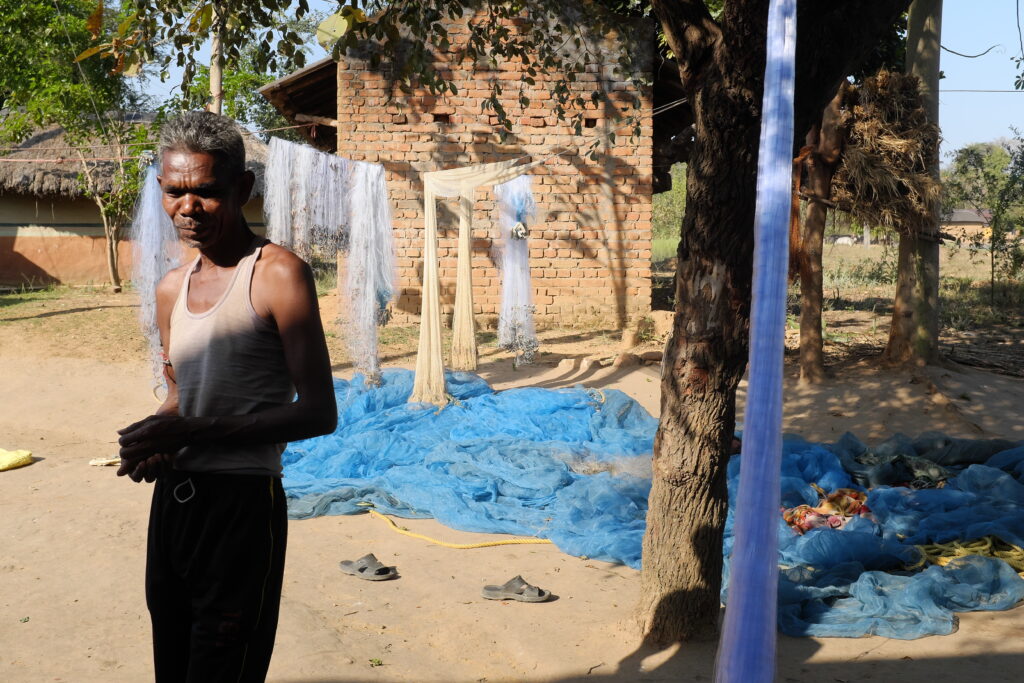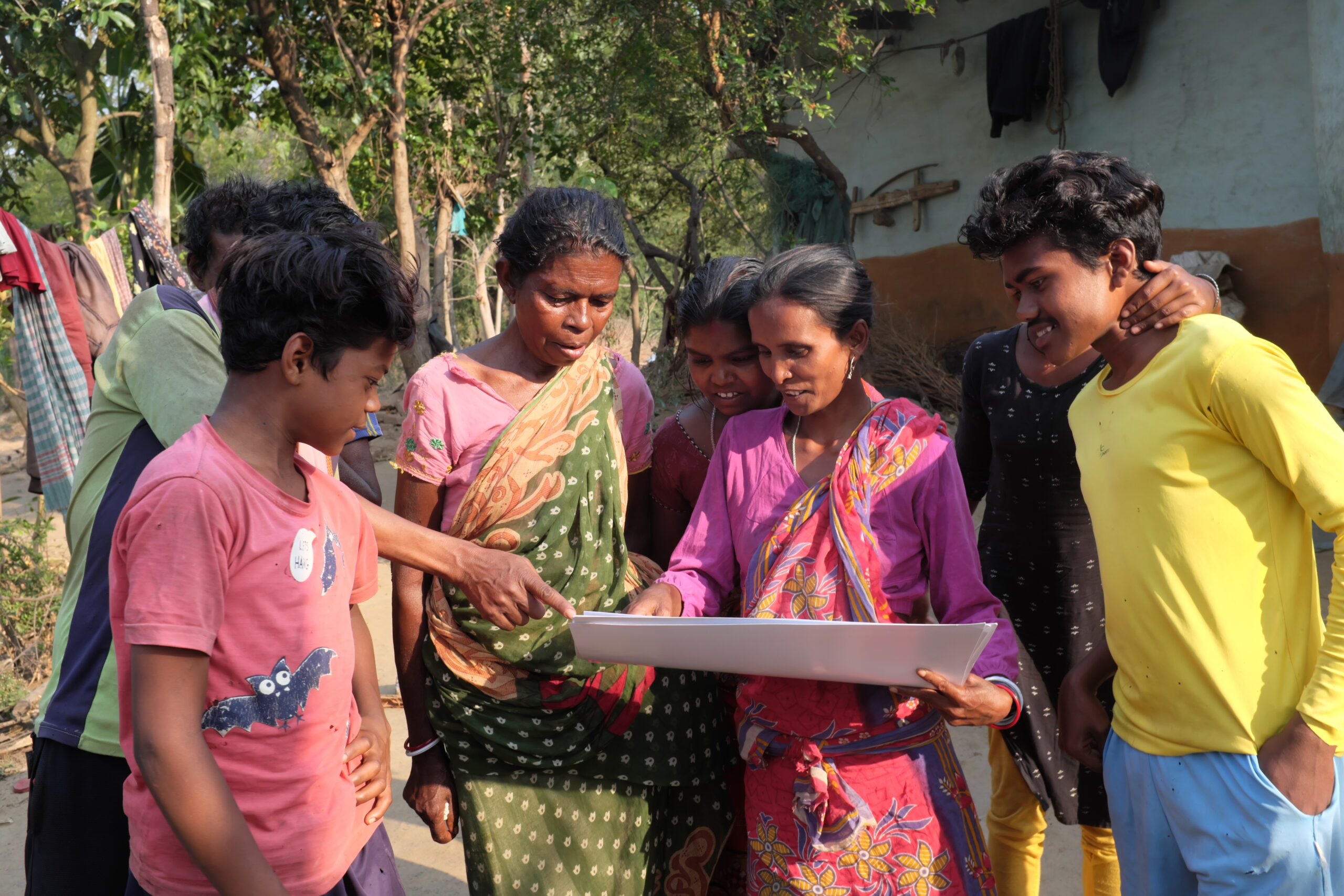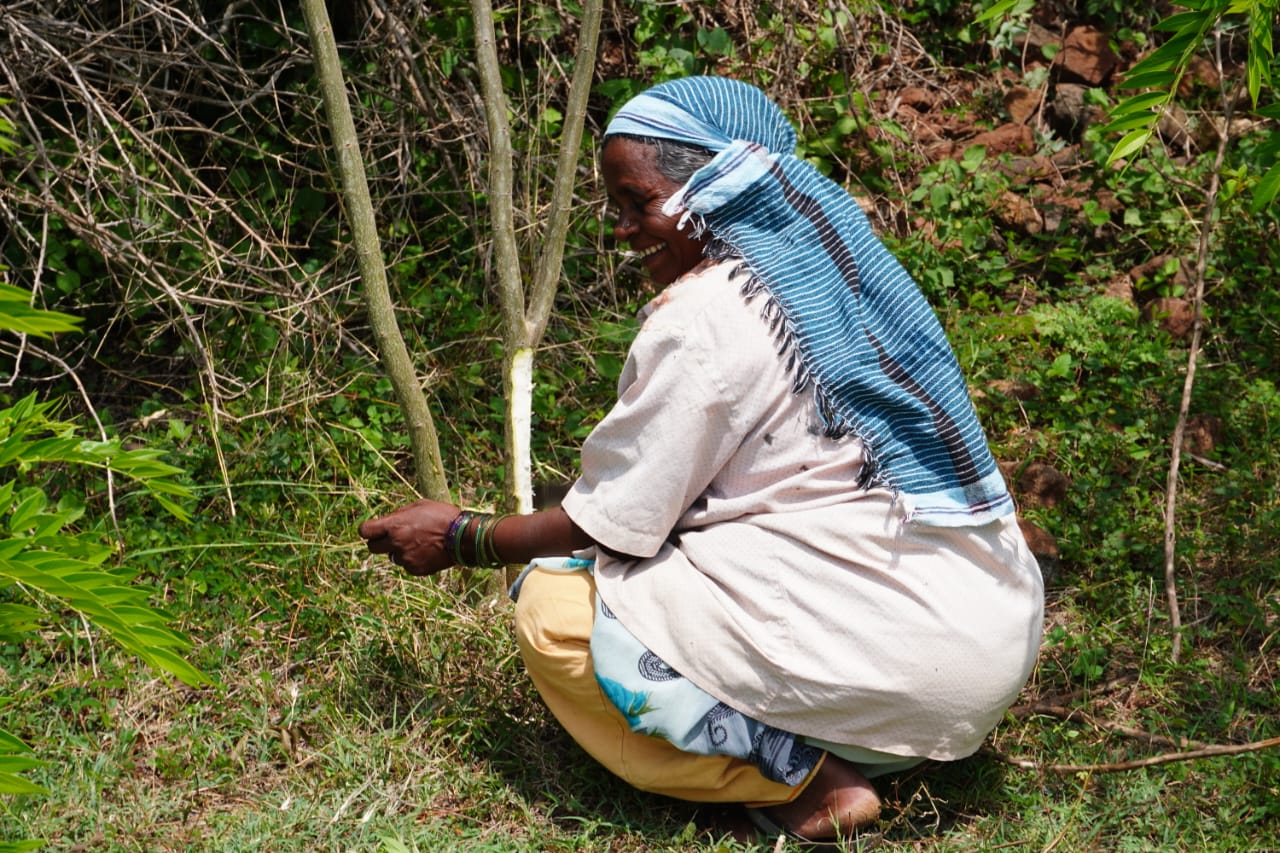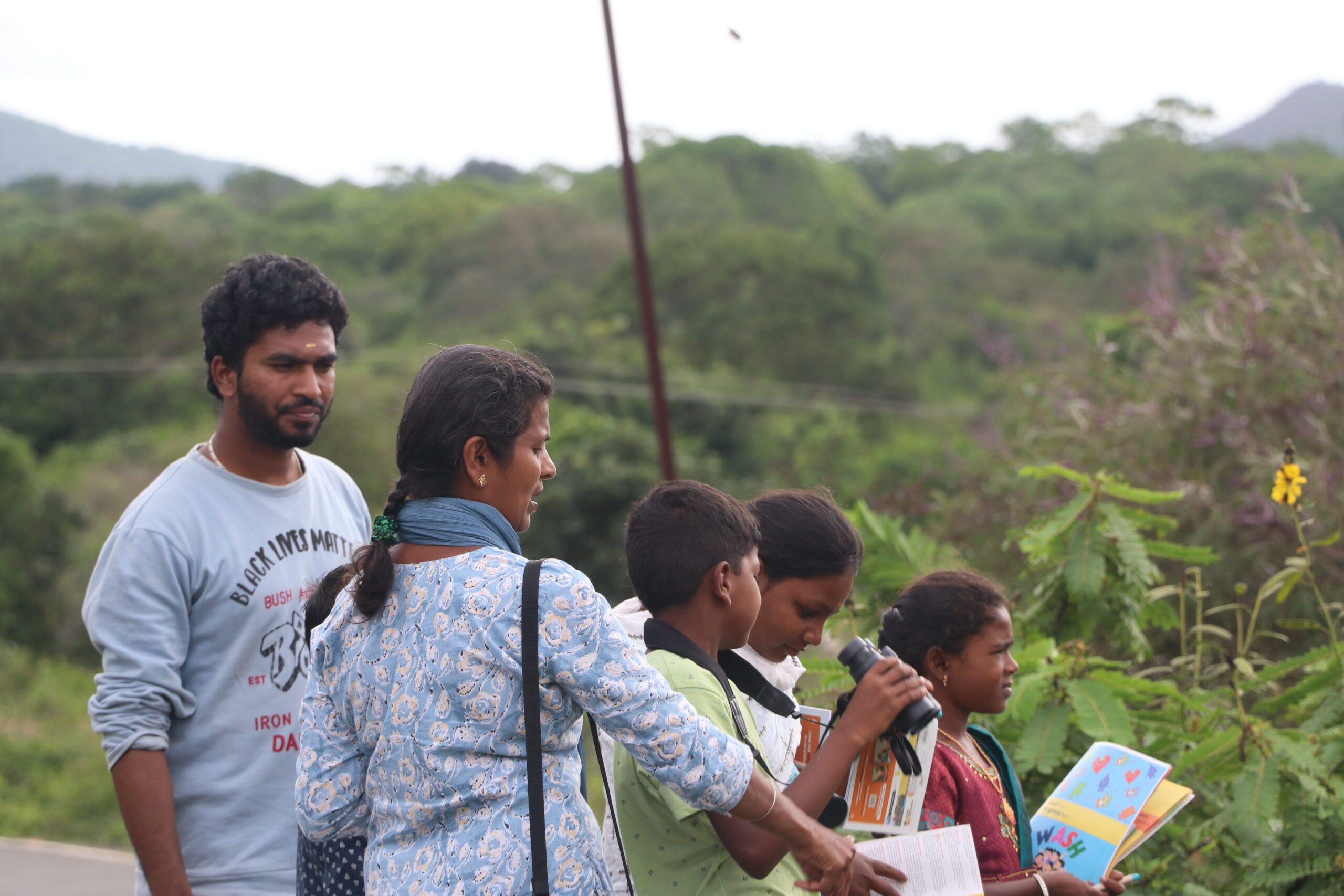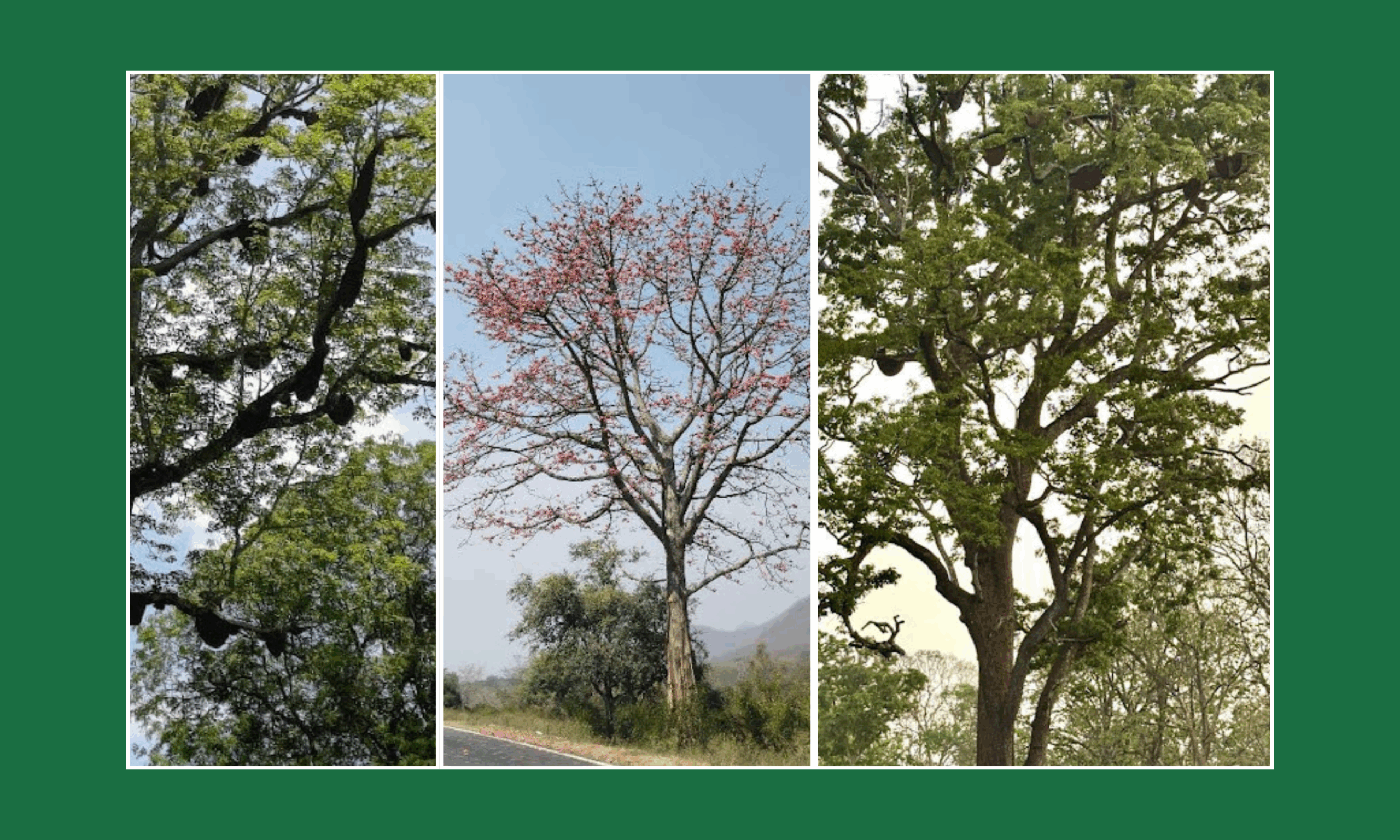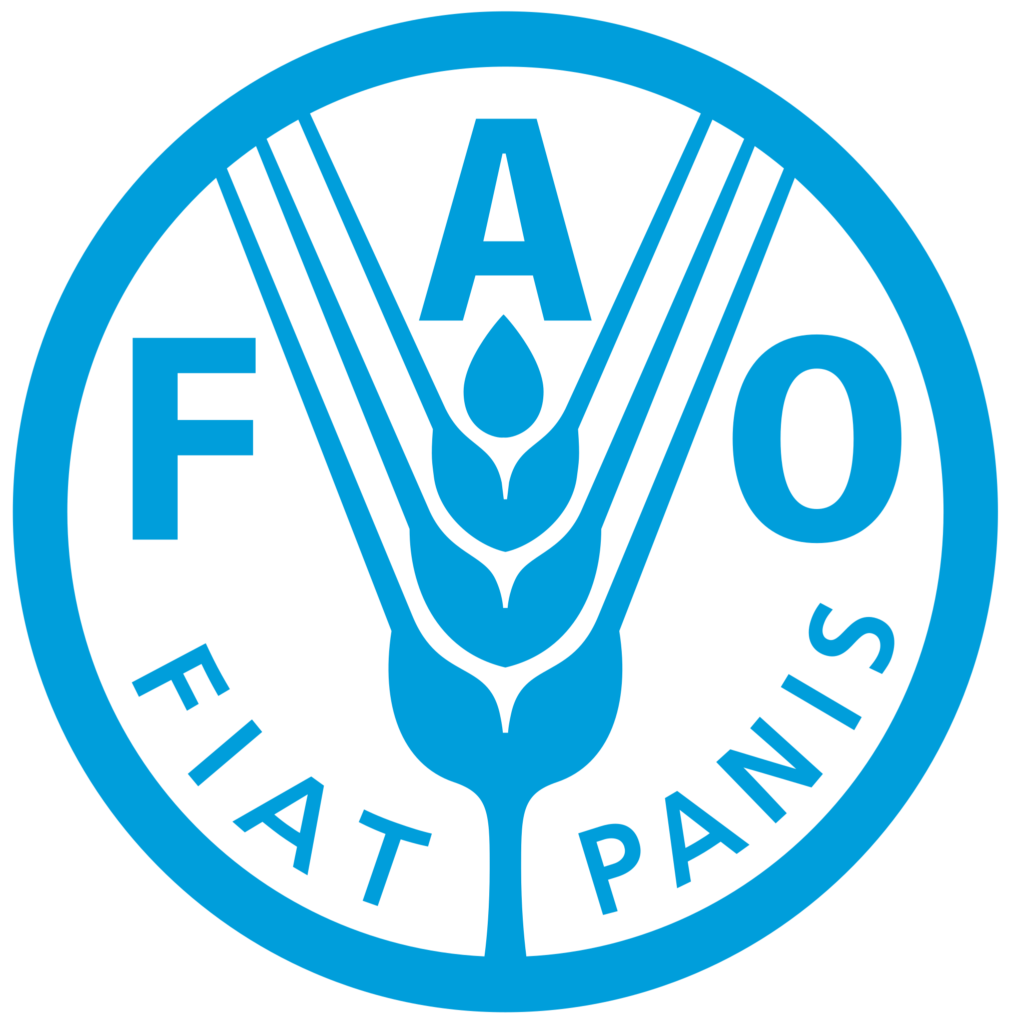By Rohan Mukerjee
Alongside Paschim Banga Kheria Sabar Kalyan Samiti (PBKSKS), Keystone Foundation has been working with the Kheria Sabar community in Purulia district of West Bengal since 2020. Our work in the region commenced through the Using Diversity (UD) project. Subsequently, Community Resource Persons (CRPs) in different blocks of the district have been supported through PNF (People and Nature Fund) and Eastern India (EI) project fellowships. The principal themes we have focused on include Agroecology, Water and Biodiversity, Community Enterprises, Wild and Uncultivated foods, Natural Resource Based Community Enterprises, Environmental Governance, Climate Action and Gender Justice. Currently, under the UD project we are working with 5 CRPs across 25 Kheria Sabar hamlets and under the EI project with 4 CRPs across 19 Kheria Sabar villages.
On 5th and 6th March 2024 accompanied by Community Facilitator Fatik Hembram, Agricultural Consultant Dhananjoy Mandi, and CRPs – Jiban Hansda, Binod Sabar and Rampada Sabar, I visited several Sabar hamlets in Bandwan and Manbazar II Blocks of Purulia district.
Banddih Sabar Para, Bandwan Panchayat, Bandwan Block, Purulia District
Banddih Sabar Para is home to 9 Kheria Sabar households and we are commencing work in this hamlet under the UD project from 2024 onwards. We shared Wild and Uncultivated Food posters and the book on the food systems of Sabar people with men, women and children of Banddih. While the Sabar people were able to identify a majority of the wild mushrooms, greens, and fish, they found it challenging to identify several wild tubers and fruits, which, as they pointed out, are not found in their adjoining forests. They were happy to see the members of the Sabar community in the Tuber poster, who they knew by name, and some were related to. In the future we were asked to bring out posters covering activities carried out by them.
A major challenge faced by the Sabar families of Banddih is the fact that they do not have any agricultural land, with all the lands around their hamlet belonging to the Mahato community. The Sabar families only own their small homestead lands, which just allow for vegetable cultivation on tiny parcels of land. However, these families are cultivating Babui Ghas (Eulaliopsis binate) on the forested hill slopes behind their hamlet. Babui Ghas is principally used for making ropes, which are sold to local traders and in local markets.
Accompanied by Padolochon Sabar and several Sabar children – Rohit Sabar, Kabita Sabar, Sonokha Sabar, Babu Sabar, Akash Sabar, and Alamoni Sabar; we visited Choto Lakra Dungri forest. Padolochon showed us his and other villagers Babui grass plots, where they cultivate the grass alongside Sal and other trees. These plots have the potential to be developed as Forest Gardens with the cultivation of a variety of shade tolerant crops like turmeric, ginger, taro, elephant foot yam and other tubers.
After inspecting the Babui Ghas plots we went on a forest trail, where we came across a variety of NTFP,wild food, and medicinal trees and plants like Bhela, Kend, Haritakki, and Chachni. We also visited the burial site of the Sabar community, located within the Choto Lakra Durngri forest area.
While returning to the hamlet, we came across Jaleshwari Sabar collecting Neem Kharkia (Neem twigs) for stitching Sia Patta (Sal Leaf) plates. NTFPs like Sal leaf plates, bark of the Chachni tree (sold for its medicinal value), and Bel fruit are an important additional livelihood source for the Sabar families of Banddih. At the edge of the hamlet, we saw Bonolata Sabar taking her goats for grazing. Most Sabar families keep a few goats which helps supplement their livelihoods. On returning to the village Almoni Sabar, who is around 6 years old, treated us to an exhibition of her English alphabet writing skills. While not all Sabar children attend school regularly, it was heartening to see that some of them were quite enthusiastic about learning and going to school.
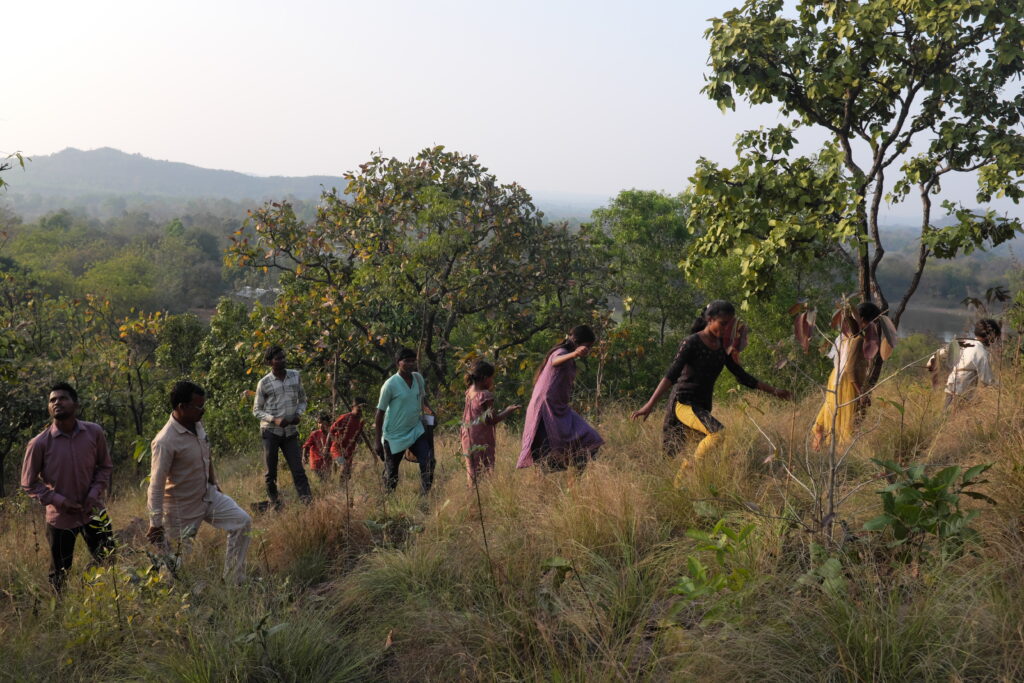
Pukurkatta Sabar Para, Kuilapal Pachayat, Bandwan Block, Purulia District
Home to 33 Sabar households, Purkurkatta Sabar Para suffers from severe land scarcity. The Sabar families only own the lands on which their homes are located. Most don’t even have enough land for tiny Kitchen Gardens. All surrounding agricultural lands belong to members of the Santal and Bhumij communities. The Sabar community has access to small patches with tree cover where Forest gardens could be established. The principal source of livelihood is cutting stone in the neighbouring Pathar Khadan (Stone quarry). A few families still cultivate a few crops like Bajra (Sorghum), Jonhar (Maize), Halud (Turmeric) as well as some vegetable crops. However, scarcity of land prevents most families from engaging in agriculture. Parakeets and other birds pose a major threat to the cultivation of Bajra (Sorghum).
The Sabar families also supplement their livelihoods from the sale of NTFPs. Most families make Ghugi (Bamboo Fishing Baskets) which sell for in excess of Rs. 300 in local markets. While some families make and sell Jhatta (Brooms) it is at a smaller scale than the making and sale of Ghugi. They also collect and sell Teetpung Shikhar (the root of a wild climber) with is used for medicinal purposes and sells for around Rs. 30 per kg, Kurchi (Holarrhena antidysenterica) seeds also in demand for medicinal uses sell for Rs. 10 per kg. They also sell small wild Bel fruit (Aegle marmelos (L.) Correa). The villagers enthusiastically explored the wild food posters and shared that while their parents used to regularly consume several wild tubers, the current consumption has declined significantly. A man even shared that nowadays if he eats Mania Aloo his stomach gets upset.
Pukurkatta Sabar Para also faces challenges with respect to access to water. The primary source of drinking water is a single hand pump. In order to meet other water needs like bathing, washing clothes and utensils they depend on a well on Santal land and a small pond which is on the land of a Bhumij villager. They shared that the pond was quite small and would like support in expanding and improving this water source. While government efforts have been made to make a boring well they were not successful.
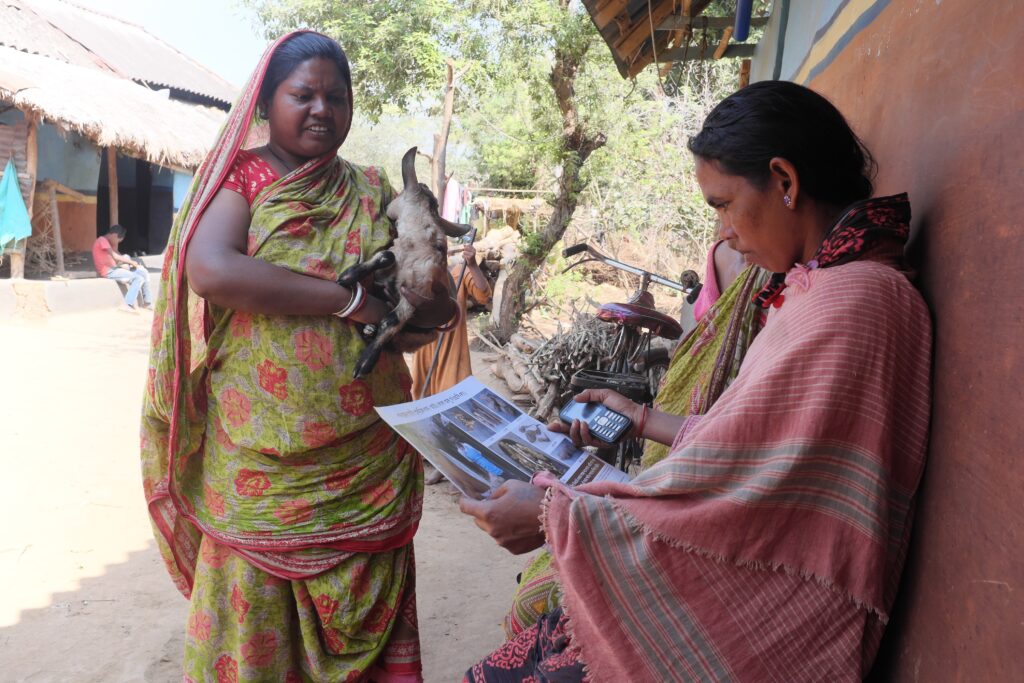
Janipur and Baridih Sabar Para, Buribandh Panchayat, Boro / Manbazar II Block, Purulia District
The two adjoining hamlets of Janipur and Baridih are home to 21 and 18 Sabar families respectively. We met Binod Sabar of Baridih who shared information about the two hamlets and also took us for a short trail through Baridih and Janipur. These hamlets don’t have any adjoining forests being surrounded by agricultural land belonging to other communities. Binod shared that they go to the mixed Golapara forest for firewood and for Sia patta (Sal leaves for making leaf plates) they visit the Kuliapal Sal forest. As a result of the scarcity of grazing land nearby only a few families rear goats – 5 households in Janipur and 4 in Baridih. A few families also make and sell Jhatta (brooms). A majority of families have small homestead plots where they cultivate a few crops like Bajra, Chilli, Brinjal, Pui Saag, Sim and other vegetables. Some families like Binod even have small tree covered plots with a mix of commercial trees like Teak and local tree species like Semul (Red Silk Cotton tree) and Doka. These plots could potentially be developed as Forest Gardens with the cultivation of shade tolerant crops like turmeric, ginger, taro, and other tuber crops. With regards to access to water Janipur has on hand pump and one Jal Minar (Solar powered water tower from a boring well) and Baridih has one well and one hand pump though the hand pump is under pressure due to use of ground water for irrigation in adjoining fields.
Golapara Sabar Para, Buribandh Panchayat, Boro / Manbazar II Block, Purulia District
Golapara Sabar Para is a small Sabar forest hamlet with 7 households. Most villagers were away but we interacted with Sumita Sabar who was collecting water from the village hand pump. This small hamlet is dominated by a giant Semul (Red Silk Cotton) tree which was a magnificent sight as it was in full bloom with stunning red flowers standing out against the largely brown landscape. The Sabar families of Golapara also have very limited land making it challenging to carry out Agriculture. But they do have access to some tree covered patches where Forest Gardens could be established and small Kitchen Gardens could be set up in their homestead. Being within Golapara forest, they rely on the collection, sale and consumption of a variety of NTFPs and wild food. Sumita and her family had collected Porasi Katti (a wild twig), sold for use in making garlands and sold at the rate of Rs. 10 per bundle. The Sabar children of Golapara gleefully identified a majority of the wild and uncultivated foods in the posters carried by Jiban. As we were leaving we met Lalchand Sabar who shared that most families cultivate a few vegetables like Chilli, Begun / Brinjal and Dingla / Pumpkin in their homestead plots and would be happy to receive further seeds for cultivation in the upcoming Kharif season. With regards to access to water, the families use 2 hand pumps for drinking water and a Pukur (pond) for bathing and other needs.
Bodo Ranga Sabar Para, Buribandh Panchayat, Boro / Manbazar II Block, Purulia District
Bodo Ranga is home to 2 Sabar hamlets, one with 6 households and the other with 9. Rampada Sabar began work in these hamlets in 2022 when he distributed a variety of seeds to Sabar families for cultivation in their hamlets. In the first hamlet Anil Sabar, his wife Lakhi Rani Sabar and other villagers informed that even in 2023 they had received a variety of seeds from CRP Bandana Sabar. Anil Sabar shared that he had personally cultivated Lal Amru (Roselle), Sim (Dolichos bean), Romha (Cowpea), Sutri (Rice bean), and Raher (Pigeon pea) and they did quite well. The Sabar families of this hamlet had access to at least some homestead lands where some, like Sumi Sabar, cultivated several vegetable crops like Aalu (Potato), Lanka (Chilli), Sim and Kumro (Pumpkin). Some like village elder Dinu Sabar also grew several tree crops like Mango, Jackfruit, Papaya, and Lemon. The villagers shared that they still consume a variety of wild foods and still have a rich traditional ecological knowledge regarding the collection and processing of various different wild foods like Kulu Allo which requires considerable processing before it is safe for consumption. They shared that their favorite wild tuber is Baola Alu, which needs to be peeled, sliced, boiled, left in running water overnight, and then boiled again before it is fit for consumption. In the second hamlet we met Manohar Sabar who was preparing fishing nets for his trade. He and members of his family take ponds on lease from landowners for around Rs. 1-1.5 lakh. They usually pay a first installment of around Rs. 50,000 before commencing fishing and pay the remaining amount after the sale of the fish with the excess revenue over above the landowners charges being their earnings. Manohar shared that they are the only Sabar family engaged in this trade. Since he is getting old he is currently training his nephew and son to take over his trade. Manohar also showed us his mango trees and he said that it was his experience that Mango trees grow better from seeds compared to grafting. With regards to water sources the hamlet has access to one hand pump and for bathing and other needs they depend on Khera Doh, a small water source adjoining the hamlet. Manohar shared that Khera Doh is in need of repair and he requested support in establishing a check dam in order to secure the water source. The villagers had contributed Rs. 10,000 in the previous year to secure the water source but this was not enough, and a more permanent solution was needed especially to ensure water availability in the summer months.
